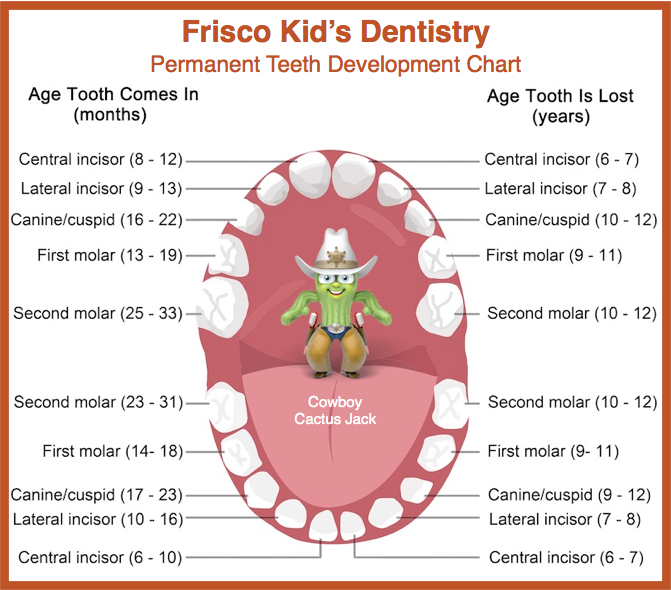
Permanent Tooth Eruption in Children
Losing Baby Teeth and Gaining Adult Teeth
Losing baby teeth is an exciting part of growing up. Who doesn’t remember that first time you put a tooth under your pillow with the anticipation of getting something special from the tooth fairy? Although losing teeth is a normal part of growth and development, some parents may have questions or concerns with the process. How many teeth do they lose? When do they start losing teeth? Should I let them play with their wiggly teeth, or should they not touch them? Should I help them wiggle their teeth out?

The timing of tooth eruption
The average age that the first tooth is lost is around six years old. If your child’s primary (baby) teeth come into the mouth early then they will most likely lose them slightly early. Conversely, if their primary teeth came in later than average then they will most likely be lost later. As a general rule, most children lose their teeth starting from the midline (front of the mouth) and continue to lose teeth from the front to the back of the mouth. An exception to this rule is the maxillary (upper) canine teeth which are usually lost after the first molars. Please see the chart below for a more detailed description of the timing of tooth loss. It is important to keep in mind that these are “average” ages for tooth loss and parents should not be concerned if their child loses teeth slightly ahead or behind these averages. Most patients will have lost all twenty of their primary teeth by the time they are thirteen years old.

What to do with a wiggly tooth
Just as every child is different, every child’s response to a loose tooth will be different. Some children get nervous and will not touch or even brush the tooth, while others will not stop continually playing with it and showing it to their friends at school. In most cases, as the permanent tooth starts to erupt, the primary tooth will continue to get increasingly mobile until it finally comes out. Children are encouraged to wiggle loose teeth, as this will aid in natural exfoliation. Parents can also aid children with wiggling out mobile primary teeth. The normal loss of primary teeth is important because over retained teeth can cause gum inflammation and sensitivity or affect the eruption pattern of permanent teeth.

Something looks funny
Although the loss of primary teeth and the eruption of permanent teeth usually occur naturally and without complications, there are sometimes variations to normal eruption. Sometimes the permanent teeth erupt behind the primary teeth and give the appearance of multiple rows of “shark teeth”. In some of these cases the primary tooth may need to be removed in order to clear a path for the permanent tooth. Sometimes the eruption of new teeth can cause swelling of the gum tissue. These swellings will appear as a bubble on the gums and can even take on a bluish hue. Although they can look dramatic, these will usually resolve spontaneously as the tooth breaks through the gum tissue and continues to erupt. Because the permanent first molars are large and move through the jawbone as they form, there are cases where a small piece of bone becomes trapped on the biting surface of the tooth. As the tooth erupts the small bony particle gets brought to the surface. Once the tooth has fully erupted this small piece will shed on its own. Lastly, if partially erupting teeth are not brushed adequately, the surrounding gum tissue can become very inflamed and sensitive (see picture 3 below). In most cases, the treatment is simply to improve oral hygiene but sometimes oral antibiotic rinses may be indicated.
Have fun
Some kids are nervous to lose teeth so it’s important to teach them that this is a natural part of growth and development. It is also important for parents to realize this is a normal part of their child’s development. If a parent is, for whatever reason, nervous or apprehensive about a loose tooth it will often lead to the child having similar anxiety. Have fun with it and take lots of pictures, because someday they’ll laugh looking back on those jack-o-lantern smiles.

